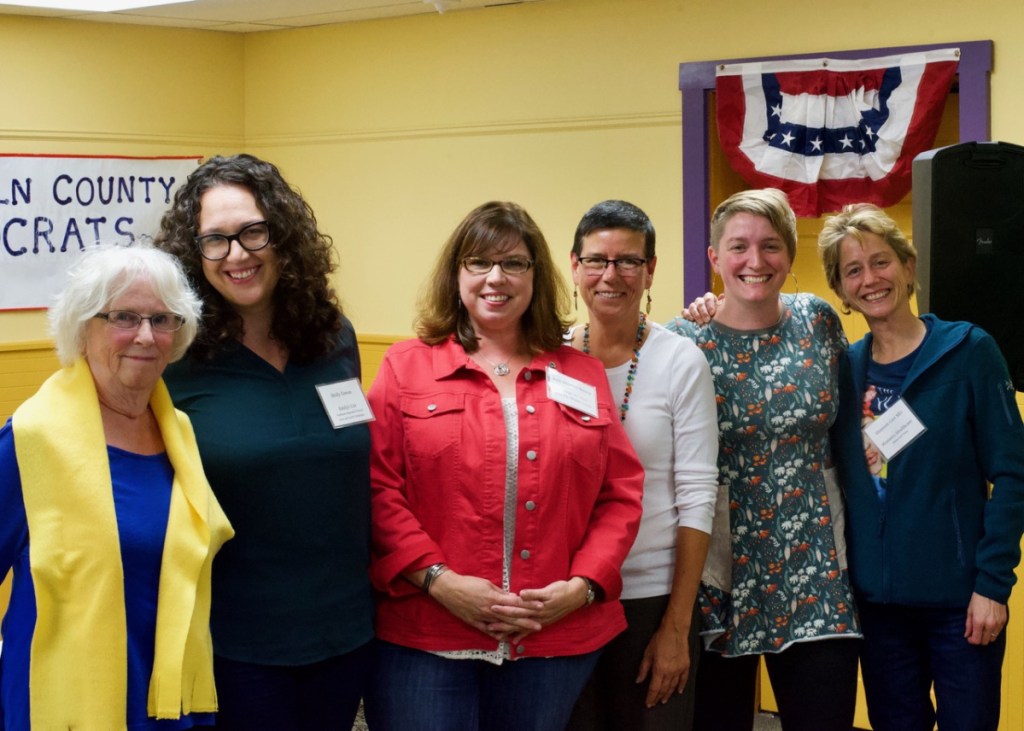This March, in celebration of Women’s History Month, it is worth noting that Maine’s newly elected governor, Janet Mills, recently made Maine arguably the “pinkest” state in the union. Her final Cabinet appointment represented — like the governor herself — the first time a woman has held that particular office (Agriculture, Conservation and Forestry) — and also ensured that more than half of the governor’s Cabinet comprises women.
As of the last election, Maine now also has a state Legislature that is 38 percent female and a congressional delegation that’s half women.
Only one other state governed by a woman — Oregon — comes close. But while Oregon has more women in its state Legislature (40 percent), only half of its Cabinet-level offices are held by women. And it has no U.S. senators, while only one of its five U.S. House representatives is a woman.
Democrats tend to elect more women, but unlike Oregon and most other states that elect large numbers of women, Maine has never been a solidly blue state. It has whiplashed between Democrats and Republicans (and independents) so often it can truly be said to be purple.
So what is it about Maine that enables women to seek (and gain) political office?
Part of the reason is its long history of female role models. In 1933 (March, fittingly), Frances Perkins broke a glass ceiling by becoming the first woman to fill a U.S. Cabinet post, as Franklin D. Roosevelt’s secretary of labor. And in the 1950s, Margaret Chase Smith became the first woman to be elected to both the House and the Senate and — in 1964 — to be nominated for the presidency by a major party. She has been often cited as an inspiration by both Sen. Susan Collins and former Sen. Olympia Snowe; all three are Republicans.
Organizations that encourage and support women to run for office are another important factor. Maine, true to its purple-state tendency, has one for both parties. (Oregon has just one, for Democrats.) Emerge Maine and She Leads both recruited new candidates in 2018. Though the group She Leads failed to elect any Republicans, Emerge Maine can take credit for helping elect 19 of the 25 female Democratic candidates to the Legislature.
Perhaps the most daunting obstacle for women breaking into politics is fundraising. Here Maine has led the way, with a strong Clean Election law since 1996. It provides public funding for a candidate who forswears other sources of financing, making it far easier for new or little-known candidates to undertake a campaign. It’s likely no coincidence that one of the other two states with a similar law, Arizona, also has a large percentage of women elected to office, including both U.S. senators.
Getting women to the polls is the final step in electing women. Here again, Maine often takes top honors. The most recent data (from 2010 through 2012) rank it third in getting women to register (76.8 percent) and second in getting them to vote (64.3 percent). Oregon, by comparison, ranks 15th and sixth respectively.
Whatever the reason, Maine women today seem an unusually feisty and determined lot. Margaret Chase Smith would have approved.
“I have few illusions and no money,” she noted when she kicked off her presidential campaign, “but I’m staying for the finish. When people keep telling you, you can’t do a thing, you kind of like to try.”
Not a bad historical role model — for anyone.
Amy MacDonald is an author and freelance writer from Falmouth. She may be contacted at: Amy781@gmail.com
Comments are not available on this story.
Send questions/comments to the editors.


